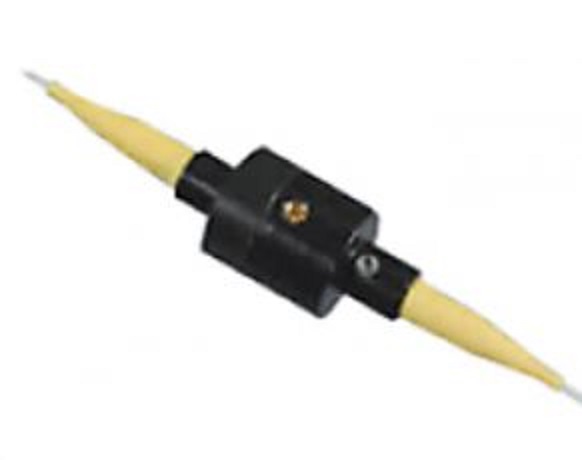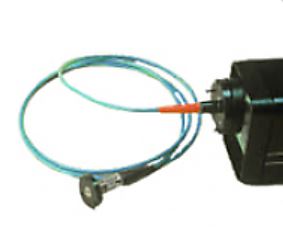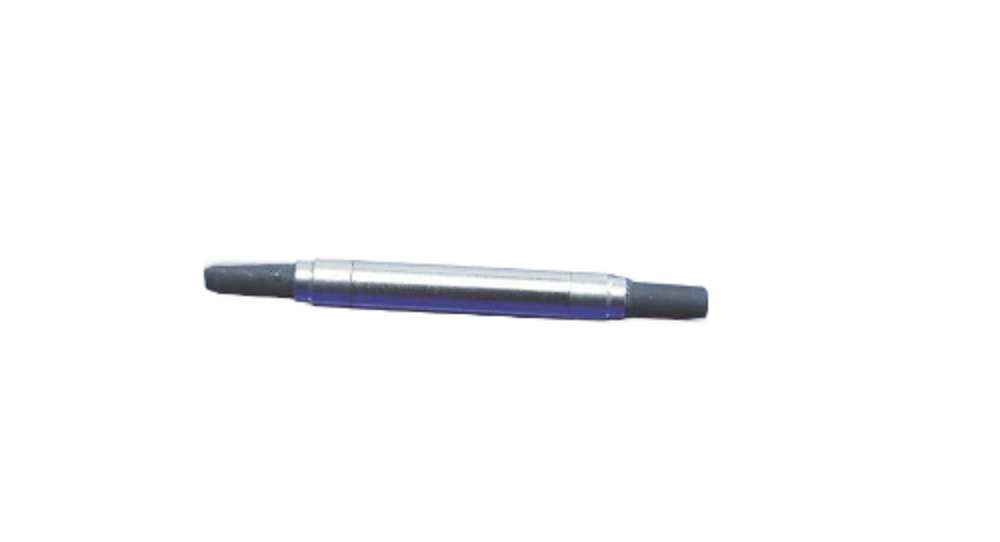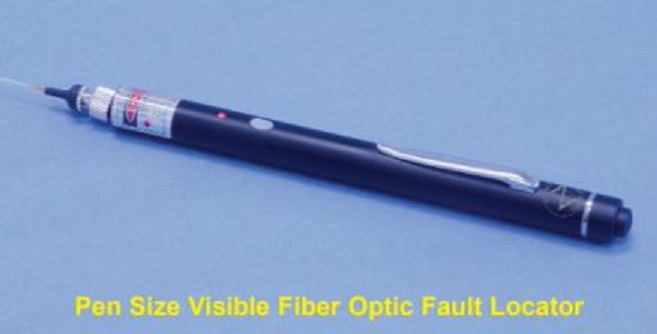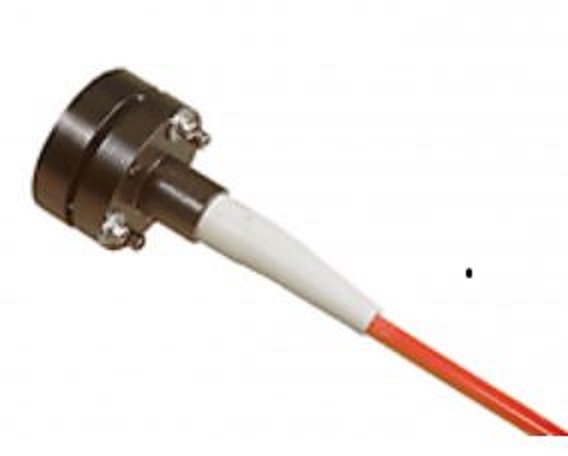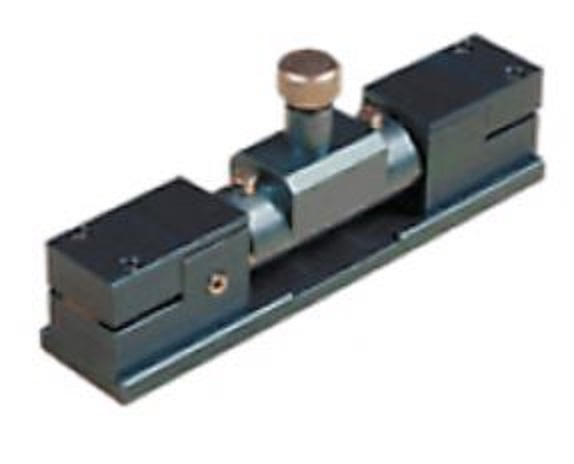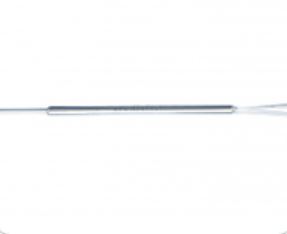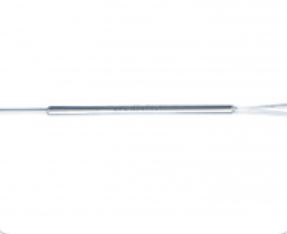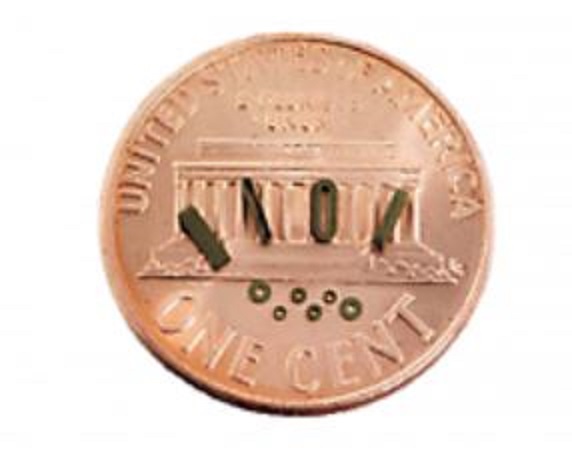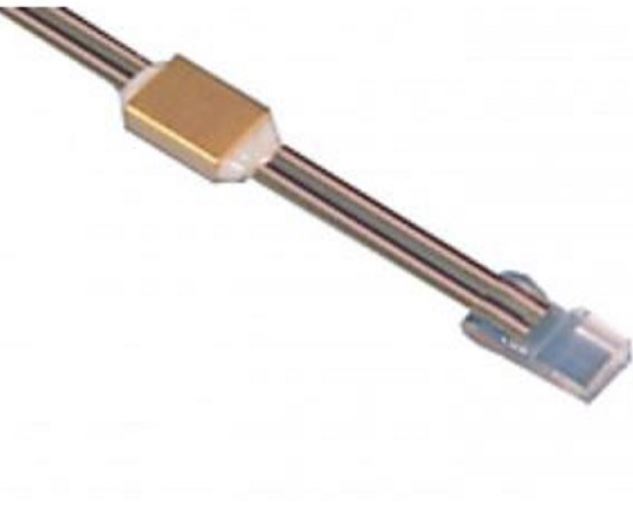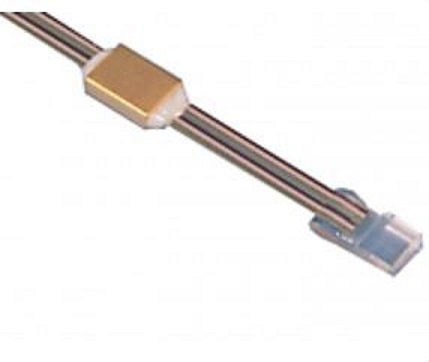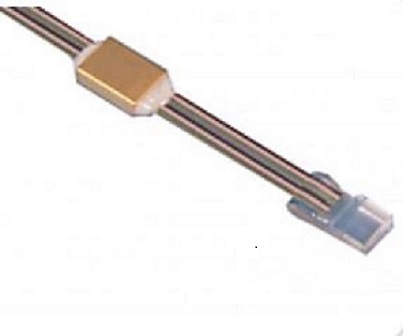Filter
–
Located in Canada's capital city of Ottawa and established in 1985, OZ Optics Ltd. is a leading worldwide supplier of fiberoptic products for existing and next-generation optical networks such as components and test equipment. Target markets include telecommunications, cable television, medical, military, industrial, aerospace, petrochemical and educational sectors. OZ Optics is ISO 9001:2000 and Telcordia certified.
FF Fixed Filters
Pigtail or Removable Style; 400 to 2100 nm; Line Width 0.3 nm; Insertion Loss 0.6 dB; Fiber Type SM, MM, PM; Connector Type FC/PC, ST, SC, LC, MU, None
OZ Optics’ FF series of fixed filters transmit or block specific wavelengths of light as they travel through the optical fiber. Light from the input fiber is first collimated and passed through the filter. The beam is then focused into the output fiber. Filter linewidths are normally defined in terms of full width at half maximum (FWHM). The standard filters used have a smooth, rounded transmission spectrum that is the result of a single Fabry Perot type cavity, simply made up of two reflectors separated by a fixed spacer of some thickness. Other filter designs are available. For instance, flat top bandpass filters are made by stacking multiple cavities together. By increasing the number of cavities one can increase the roll-off slope therefore improving the out-of-band rejection level. Please contact AMS Technologies for custom filter designs that meet your requirements. Fixed filters using single mode (SM), multi mode (MM) or polarization maintaining (PM) fibers are offered. In general, OZ Optics uses polarization maintaining fibers based on the PANDA fiber structure when building polarization maintaining components and patch cords. However, OZ Optics can construct devices using other PM fiber structures. OZ Optics also carries some alternative fiber types in stock, please contact AMS Technologies for availability. If necessary, OZ Optics is willing to use customer supplied fibers to build devices. For tunable filters refer to OZ Optics’ TF-100 series of digital tunable filters, TF-100-11 series of motor driven tunable filters, TF-11 series of manually adjustable polarization insensitive tunable filters, BTF-11 series of manually adjustable variable bandwidth tunable filters or BTF-100 series of motorized adjustable variable bandwidth tunable filters. Key Features:
Narrow Line Widths
Rugged and Compact Size
Removable Filter Holder Designs
Wide Wavelength Range
Single Mode (SM), Multi Mode (MM) and Polarization Maintaining (PM) Fiber Versions
Expanded Beam Technology
Applications: Dense Wavelength Division Multiplexing; CATV, LAN and Telecommunications Use; Test and Measurement
Product number:
SW10901
Manufacturer:
OZ Optics
Fiber Optic Delivery System for Flow Visualization
Delivery System consisting of a laser to fiber coupler, fiber optic patchcord, fiber optic collimator, and fiber optic line generator; Power Transmission ≤1 to ≤ 20 W
In flow visualization systems, a visible wavelength laser beam is coupled into an optical fiber, recollimated at the fiber output, and then sent through a lens, generating a line. This line of laser light is then shone through the flowing liquid under inspection. Any particulate matter present, or changes to the flow pattern within the fluid, causes fluctuations in the output beam pattern which are visually observed.
OZ Optics offers complete delivery systems for flow visualization, consisting of a laser to fiber coupler, fiber optic patchcord, fiber optic collimator, and fiber optic line generator. The line generator uses a Powell lens. Compared to simple cylindrical lenses, this Powell lens transforms a collimated beam into a line with a uniform output intensity along its entire length.
Fiber optic delivery systems are available for a wide range of wavelengths. Other wavelengths are available on request. The maximum power transmission possible depends upon the fiber size chosen 4/125 fiber can handle 1 W to 3 W, 10/125 fiber can handle 3 W to 5 W, 25/125 fiber can handle 5W to 10 W, and 50/125 fiber can handle 10 W to 20 W. For best repeatability and stability, FC connectors are recommended for the fiber couplers and collimators. Pigtail style couplers and collimators are also recommended.By choosing different focal lengths for the collimating and Powell lenses, different line widths and fan angles are possible. Standard line widths for singlemode fibers are 0.8 mm and 1.2 mm. Standard fan angles are 10°, 30° and 45°. Contact us for further information on available line widths and fan angles.
Key Features:
Uniform Output Intensity over Entire Length
Rugged and Compact Design
Low Insertion Loss
Visible Wavelength Range: 400 to 700 nm
Wide Fan Angles Available: 10 to 75 degrees
Applications: Flow Cytometry, Particle Measurement, Imaging Systems
Product number:
SW10714
Manufacturer:
OZ Optics
FO(P)I-00 High Power Free Space Isolators
Polarization Sensitive & Insensitive Versions; 1040 nm to 1090 nm; Isolation ≥35 dB; Power Handling ≤80 W; 48 mm x 48 mm x 133 mm
The FO(P)I-00 series of free space isolators are featuring options to allow the customer to mount their own fiber pigtailed collimator or beam expander. The OZ Optics tilt adjustment technique gives customers the ability to perform the optical alignment themselves.Isolators are optical devices that allow light to be transmitted in one direction only. They block the source from reflected light, thus preventing any feedback problems, such as frequency instability, relaxation oscillations, amplified stimulated emissions, or optical damage – very critical with the recent dramatic increase in laser output powers, especially in the 1030 to 1090nm wavelength range.
To meet this demand OZ Optics has developed a line of high power handling isolators, capable of peak isolation levels of 30 dB to 50 dB for 1030 nm to 1090 nm, depending on the input beam size (with typical beam diameters of 0.4mm to 1.1mm).
The isolators come with built-in windows to prevent dust contamination of internal isolator optics. These protection windows are easily removed and replaced by the user. Custom smaller packages can be made for OEM applications – contact us for more details.
Key Features:
Operating Wavelength Range: 60 nm
Power Handling: Up to 80 W
Isolation: Up to 50 dB
Low Insertion & Polarization-dependent Losses
Excellent Beam Quality
Removable Protective Windows
RoHS compliant
Applications: Protection of high power lasers from reflections during a) laser marking and engraving; b) laser cutting and etching of metal surfaces with high reflectance such as Al, Cu, Au or Ag; c) micro machining and trimming
Product number:
SW10365
Manufacturer:
OZ Optics
FO(P)I-10A High Power Fiber-to-Free-Space-Isolators
Polarization Sensitive & Insensitive Versions; Fiber Type SM, PM, LMA, PLMA; 1030 nm to 1090 nm; Isolation ≥30 dB; Power Handling ≤50 W
FOP(I)-10A fiber-to-free-space isolators are offered with fiber pigtailed or receptacle-style collimators on the input beam, with typical beam diameters of 0.4 mm to 1.1 mm. With receptacle-style collimators, customers can connect a high-power patchcord terminated with an adjustable FC connector. This option gives the user extra flexibility in the control of beam size propagating through the isolator and allows the user to change the fiber if desired.
Isolators are optical devices that allow light to be transmitted in one direction only. They block the source from reflected light, thus preventing any feedback problems, such as frequency instability, relaxation oscillations, amplified stimulated emissions, or optical damage – very critical with the recent dramatic increase in laser output powers, especially in the 1030 to 1090nm wavelength range. To meet this demand OZ Optics has developed a line of high power handling isolators, capable of peak isolation levels of 30 dB to 50 dB for 1030 nm to 1090 nm, depending on the input beam size.
OZ Optics uses a patented tilt alignment technique to manufacture isolators with fiber pigtails. Light from an optical fiber is first collimated then transmitted through the isolator. The fibers can be standard single mode fibers or Large Mode Area (LMA) fibers. LMA fibers are used to reduce the optical power density in the fiber core and therefore allow guidance of larger input power levels while still achieving near-gaussian output beam quality. This patented tilt alignment technique allows OZ Optics to offer compact pigtailed devices.
The isolators come with built-in windows to prevent dust contamination of internal isolator optics. These protection windows are easily removed and replaced by the user. Custom smaller packages can be made for OEM applications – contact us for more details.
Key Features:
Operating Wavelength Range: 60 nm
Power Handling: Up to 80 W
Isolation: Up to 50 dB
Low Insertion & Polarization-dependent Losses
Excellent Beam Quality
Removable Protective Windows
Pigtail or Adjustable Focus Receptacle Style Collimators/Focusers
RoHS compliant
Applications: Protection of high power lasers from reflections during a) laser marking and engraving; b) laser cutting and etching of metal surfaces with high reflectance such as Al, Cu, Au or Ag; c) micro machining and trimming
Product number:
SW10364
Manufacturer:
OZ Optics
FO(P)I-11/21 Fiber-to-Fiber Isolators
Polarization Sensitive & Insensitive Versions; SM or PM Fiber; 532 nm to 2000 nm; Isolation ≥20 to ≥40 dB; Power Handling 0.5 to 10 W
This complete line of pigtailed fiber-to-fiber isolators for wavelengths ranging from 532 nm to 2000 nm combines a free-space Faraday rotator with polarizing optics to provide up to 60 dB of isolation and high power handling with minimum losses. Our isolators are manufactured using OZ Optics' patented tilt alignment technique. Input light from an optical fiber is first collimated, then transmitted through the isolator optics. A focusing lens on the output side of the isolator then couples the light back into the output fiber. This method is highly flexible and allows isolators capable of handling up to 10 W of optical power through single-mode fibers.
Isolators are offered in two different versions, polarization sensitive and polarization insensitive. Polarization sensitive isolators are well suited for PM fibers and for some applications where an input free-space beam of constant polarization enters the Faraday optics. However, these isolators are not recommended for SM fibers, as these fibers do not maintain polarization. For this reason we recommend using polarization insensitive isolators with standard SM fibers. Please note however that polarization insensitive isolators are not necessarily available for all wavelengths or power levels.
Key Features:
Polarization Sensitive and Insensitive Versions
Wavelength: 532 nm to 2000 nm
High Isolation Levels
Low Insertion & Polarization-dependent Losses
Different Compact Sizes Including Miniature Packaged Versions
Stable and High Reliability Designs
Applications: High-power Laser to Fiber Coupling Systems; Optical Amplifiers; CATV Systems; OCT Systems
Product number:
SW10366
Manufacturer:
OZ Optics
FO(P)I-11A High Power Fiber-to-Fiber Isolators
Polarization Sensitive & Insensitive Versions; Fiber Type SM, PM, LMA, PLMA; 1030 nm to 1090 nm; Isolation ≥30 dB; Power Handling 1 W
Isolators are optical devices that allow light to be transmitted in one direction only. They block the source from reflected light, thus preventing any feedback problems, such as frequency instability, relaxation oscillations, amplified stimulated emissions, or optical damage – very critical with the recent dramatic increase in laser output powers, especially in the 1030 to 1090nm wavelength range.
To meet this demand OZ Optics has developed a line of high power handling isolators, capable of peak isolation levels of 30 dB to 50 dB for 1030 nm to 1090 nm, depending on the input beam size. The isolators are offered with fiber pigtailed collimators on the input and output beam, with typical beam diameters of 0.4 mm to 1.1 mm.
OZ Optics uses a patented tilt alignment technique to manufacture isolators with fiber pigtails. Light from an optical fiber is first collimated then transmitted through the isolator. The fibers can be standard single mode fibers or Large Mode Area (LMA) fibers. LMA fibers are used to reduce the optical power density in the fiber core and therefore allow guidance of larger input power levels while still achieving near-gaussian output beam quality. This patented tilt alignment technique allows OZ Optics to offer compact pigtailed devices.
The isolators come with built-in windows to prevent dust contamination of internal isolator optics. These protection windows are easily removed and replaced by the user. Custom smaller packages can be made for OEM applications – contact us for more details.
Key Features:
Wide Operating Wavelength Range: 60 nm
Power Handling: Up to 80 W
Isolation: Up to 50 dB
Low Insertion & Polarization-dependent Losses
Excellent Beam Quality
Removable Protective Windows
RoHS compliant
Applications: Protection of high power lasers from reflections during a) laser marking and engraving; b) laser cutting and etching of metal surfaces with high reflectance such as Al, Cu, Au or Ag; c) micro machining and trimming
Product number:
SW10363
Manufacturer:
OZ Optics
FOBS-12N PM Splitters
Polarization Maintaining Splitters, Miniature Size; 980 to 1550 nm; Splitting Ratio 50/50 to 98/2; Polarization Dependent Loss 0.1 dB; Directivity >50 dB
OZ Optics’ FOBS-12N series of miniature polarization maintaining fiber optic beam splitters are used to split the light traveling through a fiber into two fibers, or to split or combine orthogonally polarized light into separate fibers. These splitters feature a rugged miniature housing to fit into compact spaces in equipment and systems.
Light from a fiber is first collimated, then sent through a beam-splitting optic to divide it into two beams by either a fixed ratio or into two orthogonal polarizations. The resultant output beams are then coupled back into the output fibers. This flexible design allows splitters with different fiber types on the input and output ports. For example, light from a single mode fiber could be split into its two orthogonal states and then launched into two polarization maintaining fibers. Standard products for 1550 nm applications are readily available, while custom items can be made with rapid turnaround at low cost. Products for other wavelengths, such as 980 nm, 1300 nm, or 1480 nm are offered. Contact AMS Technologies for details and a quotation.
Also known as optical taps, the FOBS-12N series of miniature polarization maintaining splitters use a partially reflecting mirror to transmit a portion of the light from the input fiber to the main output fiber and reflect the remainder of the light to the second output fiber. All ports using polarization maintaining fiber are aligned so that polarized light aligned parallel to the stress rods on the input fiber emerge from the output fibers in the same manner, maintaining the polarization state to a high degree. Splitters that only split off a small portion of the input light are commonly known as taps. These splitters are often used for power monitoring applications. The small signal, typically between 1% and 10%, is sent to a monitoring photodiode, while most of the signal goes on to the main destination.
Key Features:
Rugged Compact Design
Broad Wavelength Range
Low Insertion, Return & Polarization Dependent Losses
High Extinction Ratio- Low Wavelength Dependent Loss (WDL)
Applications: EDFA Amplifiers; Raman Amplifier Combiners; Polarization Mode Dispersion Compensation; Polarization Extinction Ratio Measurements; Fiber Optic Sensors; Coherent Communication Systems; OCT Systems
Product number:
SW10514
Manufacturer:
OZ Optics
FOBS-12N SM Splitters
Single Mode Splitters, Miniature Size; 980 to 1550 nm; Splitting Ratio 50/50 to 98/2; Polarization Dependent Loss 0.1 dB; Directivity >50 dB
OZ Optics’ FOBS-12N series of miniature polarizing (single mode) fiber optic beam splitters are used to split the light traveling through a fiber into two fibers, or to split or combine orthogonally polarized light into separate fibers. These splitters feature a rugged miniature housing to fit into compact spaces in equipment and systems.
Light from a fiber is first collimated, then sent through a beam-splitting optic to divide it into two beams by either a fixed ratio or into two orthogonal polarizations. The resultant output beams are then coupled back into the output fibers. This flexible design allows splitters with different fiber types on the input and output ports. For example, light from a single mode fiber could be split into its two orthogonal states and then launched into two polarization maintaining fibers. Standard products for 1550 nm applications are readily available, while custom items can be made with rapid turnaround at low cost. Products for other wavelengths, such as 980 nm, 1300 nm, or 1480 nm are offered. Contact AMS Technologies for details and a quotation.
The FOBS-N12 series of polarizing beam splitters split incoming light into two orthogonal states. They can also be used to combine the light from two fibers into a single output fiber. When used as a beam combiner, each input signal will transmit along a different output polarization axis. By default, the output fibers on a polarizing splitter are aligned so that the output polarization from each fiber is in line with the stress rods of the fibers. If the input fiber is a polarization maintaining (PM) fiber, the input fiber is aligned such that light polarized parallel to the fiber’s stress rods is transmitted to port 1 of the splitter, while light polarized perpendicular to the stress rods is transmitted to port 2 of the splitter.
Key Features:
Rugged Compact Design
Broad Wavelength Range
Low Insertion, Return & Polarization Dependent Losses
High Extinction Ratio- Low Wavelength Dependent Loss (WDL)
Applications: EDFA Amplifiers; Raman Amplifier Combiners; Polarization Mode Dispersion Compensation; Polarization Extinction Ratio Measurements; Fiber Optic Sensors; Coherent Communication Systems; OCT Systems
Product number:
SW10515
Manufacturer:
OZ Optics
FOC-12 Fiber Optic Circulators
PM and SM Versions; Panda PM or SM Fiber; 780 to 1550 nm; 3 Ports; Insertion Loss ≤0.7 to ≤1.0 dB
Fiber optic circulators act as signal routers, transmitting light from an input fiber to an output fiber, but directing light that returns along that output fiber to a third port. They perform a similar function as an isolator, protecting the input fiber from return power, but also allowing the rejected light to be employed. OZ Optics miniature inline circulators are ideal for OEM applications. They are available with either singlemode or polarization maintaining fiber. OZ Optics’ PM fiber optic circulators are manufactured with polarization maintaining fibers, making them ideal for polarization maintaining applications such as 40 Gbit systems or Raman pump applications. They are also used in double pass amplifiers and in chromatic dispersion compensation modules.
The standard PM fiber alignment is for all power to be transmitted along the slow axis of each fiber (Fast axis blocking). With OZ Optics’ modular design and custom manufacturing capabilities, any of the three ports can be aligned for fast axis coupling. High extinction ratio connectors can also be installed. Regardless of the state of polarization of the return beam, the input fiber will still be isolated from reflected light. For non-telecom wavelengths and high power applications, the cube style circulator is offered. This design is well suited for custom applications.
Additional connector and cable options and custom designs are also available. Please forward a detailed description of your application to us.
Product number:
SW10345
Manufacturer:
OZ Optics
FODL Fault Locators
520 to 660 nm; Optical Power 0.5 to 30 mW; CW to 2 kHz; Connector Type Super/Angled NTT-FC/PC, SC, ST, Universal
OZ Optics’ FODL series of visible fiber optic fault locators launches 635 nm visible laser diode light into the fiber. When light encounters a break or sharp bend, it scatters, and the scattered light can be observed emerging from the cable. Fault locators can locate breaks in short patchcords, which an OTDR cannot detect due to its operating dead zone. A fault locator is also much less expensive than an OTDR. However, they are not recommended for use with dark-colored or armored cables.
Another use for fault locators is to check connector quality – inside the connector ferrule, poor gluing or dirt may create a micro bend in the fiber producing excess insertion or return losses and maybe resulting in premature failure of the connector. Launching visible light through the fiber, so that it emerges from the connector in question, the distortion appears as a series of rings superimposed on a normal output.
Fault locators are available in bench-top, pocket and pen format. Pocket size fault locators can be operated in either CW or pulse modulation mode. Pen size fault locators are CW only. High power versions, available as bench-top units, are also CW only.
Key Features:
Pen, Pocket and Bench-top Versions Available
High Visibility (up to 6 km with a 1 mW, 635 nm Source)
Higher Output up to 30 mW, Non-contact Style Power Versions Available
Continuous Light or Pulse Modulation
Power Supply Alkaline Batteries or AC/DC Adapter
Carrying Pouch with Belt Clip for Pocket-size Version
1.25 mm and 2.5 mm ID Universal Connector Receptacles Available
Applications: Single Mode and Multi Mode Fiber Testing; Fiber Identifier Applications; Locating Breaks and Bends in Fibers and Connectors; Identifying Fibers and Tracing Optical Signals by Using Modulated Signals; Optimizing Splices
Product number:
SW10597
Manufacturer:
OZ Optics
FOP Fiber Optic Polarizers
Center Wavelength 400 to 2050 nm; Insertion Loss Typ. 0.5 to 1.0 dB; Return Loss ≥40 to ≥70 dB; Polarization Extinction Ratio 20, 30; Fiber Type SM, MM, PM
OZ Optics’ FOP series of fiber optic polarizers are designed to polarize the output from a light source or fiber and launch it into an output fiber. These polarizers typically consist of input and output collimators with a plate polarizer in between. Broadband polarizers are used, so the power extinction ratio is maintained for up to several hundreds of nanometers. The same polarizer, for example, may be used for 1300 nm to 1600 nm. The power extinction ratio is the ratio between maximum and minimum output power as the input polarization state is changed. This is different from the output polarization extinction ratio, which is a measure of the ratio between the power in the two axes of polarization maintaining fiber – this value is only applicable when the output fiber is polarization maintaining (PM) fiber. The power extinction ratio will always equal or exceed the polarization extinction ratio. OZ Optics offers fiber optic polarizers in four sizes. The original 12.5 mm diameter size is best suited for non-telecom wavelengths and for custom designs. The larger size is also well suited for high power applications. Polarizers capable of transmitting several Watts of power have been made with this technique. The 5.5 mm diameter size is well suited for telecom wavelengths, such as 1310 and/or 1550 nm, while the 4 mm diameter option is best suited for low-cost systems where lower output extinction ratios are acceptable. Finally, OZ Optics offers a version that is only 3 mm in diameter, featuring exceptionally low return losses and superior performance over a very broad temperature range. Key Features:
Rugged and Compact Housing
Single Mode (SM), Multi Mode (MM), Polarization Maintaining (PM) and Fiber Combinations Available
Miniature Sizes Available
Wide Range of Available Wavelengths: 400 to 2050 nm
High Extinction Ratio up to 40 dB
Low Loss
Low Back Reflection
Applications: Fiber Amplifiers; System Polarization Extinction Ratio Conditioning; Measuring Polarization Extinction Ratio; Sensors; Integrated Optics; Interferometric Sensors; OCT Systems
Product number:
SW10871
Manufacturer:
OZ Optics
FORF Fiber Optic Reflectors
Fixed or Variable; Receptacle or Pigtail Style; Fiber Type SM, MM, PM; 400 to 1600 nm; Back Reflection 25 to 60 dB
OZ Optics’ FORF series of fiber optic reflectors are used to reflect the light emerging from a fiber back in the reverse direction. They are used to build fiber interferometers, or with fiber fused splitters to measure back reflection within fiber optic components. They can also be used to measure the sensitivity of sources to back reflection from other devices, by providing reference reflection levels. This is very useful for deriving back reflection specifications for transmitters. Fiber optic reflectors consist of a fiber optic collimator and a mirror. The fiber output is first collimated, then it strikes the mirror and is reflected back into the collimator. The angle between the collimator and the mirror is adjusted using OZ Optics' patented tilt adjustment technique, until as much light as possible is reflected back into the fiber. Using this technique, reflectors with typical losses of only 0.6 dB can be constructed. A variable reflector is available that includes a blocking screw, to obtain variable reflection levels. This is achieved by partially blocking the collimated beam between the lens and the mirror. Both connector receptacle style and pigtail style reflectors are available. Connector receptacle style reflectors come with a female connector receptacle to allow the fibers to be easily changed. Pigtail style reflectors come with a fiber of your choice permanently attached to the collimating lens. This type of reflector is recommended for optimum coupling efficiency and stability. The other end of the fiber can be terminated with your choice of connector. OZ Optics also provides fibers with coated ends. Gold coatings are used to provide excellent broadband reflection for infrared wavelengths. Other coating materials are available for other wavelengths. The ends can have total reflecting, or partial reflecting/partial transmitting coatings. Contact AMS Technologies for further information. Reflectors are available for wavelengths from 400 to 1600 nm. Reflectors that operate at both 1300 and 1550 nm are available, with only a slight difference in insertion losses at both wavelengths. Broadband reflectors using achromatic lenses to collimate light at different wavelengths are available. Partially reflecting mirrors are also available, to partly transmit the light. The transmitted light can be coupled into an output fiber as an option, thus forming an in-line reflector. Contact AMS Technologies for further details. Key Features:
Wide Range of Available Wavelengths
Available in Single Mode (SM), Polarization Maintaining (PM) and Multi Mode Versions
Low Insertion Loss
Compact Housing
Partial Reflectors Available
Applications: Interferometric Sensors; Circulators; Return Loss Testing; Reference Beam Power Measurements
Product number:
SW10866
Manufacturer:
OZ Optics
FOSS Diode Laser Sources
Handheld Diode Laser Sources, Single or Double Wavelength; 635 to 1625 nm; Output Power 0.02 to 1 mW; Case 76 x 127 x 25 mm; Linewidth 1.5, 30, 50 nm typ.
OZ Optics’ FOSS series of single or dual wavelength fiber optic laser diode sources is available in a variety of wavelengths. These receptacle-style sources are offered with a wide range of receptacles, while the pigtail-style sources offer the choice of polarization maintaining (PM), single mode (SM) or multi mode (MM) fiber output. Each source has a low battery indicator on the front panel. FOSS standard sources provide continuous waveform output but can also be pulse modulated internally at 270 Hz, 1 kHz and 2 kHz. As an option, OZ Optics can include a blocking-style optical attenuator to adjust the output power for the FOSS-01 and FOSS-11 models. This method of power control does not affect the spectral properties of the laser diode output. The FOSS-2N allows the user to select one of four preset power levels via the keypad. The FOSS-22 dual wavelength variants consist of two sources in a single, lightweight package and are ideal for multimode fiber testing. Either one of the two outputs can be activated from the front panel. The user interface is controlled by a microprocessor and the optical outputs are thermally stabilized. An LED display and simple keys on the front panel provide easy operation. The front panel keys are used to select on, off, modulation, and wavelength. The LED source allows the user to select one of four preset power levels via the keypad. In general, OZ Optics uses polarization maintaining fibers based on the PANDA fiber structure when building polarization maintaining components and patch cords. However OZ Optics can construct devices using other PM fiber structures. OZ Optics does carry some alternative fiber types in stock, so please contact AMS Technologies for availability. If necessary, OZ Optics is also willing to use customer supplied fibers to build devices. OZ Optics recommends angled connectors for improved stability. For 1300 nm and 1550 nm wavelengths, an isolator can be added for improved stability. OZ Optics also manufactures the HIFOSS series of highly stable laser diode sources, which includes a temperature controller and an isolator. Key Features:
Single or Dual Wavelength Sources
Continuous Wave (CW) and Waveform Modulation
Wide Range of Connector Receptacles
Optional Output Power Adjustment
Polarization Maintaining, Single Mode or Multi Mode Versions
Low Battery Indicator
Rugged and Compact Design
User-selectable Auto Turn-off Mode
Applications: Insertion Loss Measurement and Attenuation Measurement; Fiber Identification Using Internal Modulated Mode; Splicing and Connectorization Testing; End-to-end Short Link Testing; FTTX/PON; Installing and Maintaining Fiber Optic Networks; Testing Multi Mode Fiber Cables; Testing Passive Optical Components; Verifying Patchcord Specifications; Calibrating Optical Receivers; Laboratory Research; Quality Assurance
Product number:
SW10862
Manufacturer:
OZ Optics
FPC/HFPC/PFPC Fiber Polarization Controllers
400 to 2200 nm; Return Loss ≥40 to ≥60 dB; Available Polarization Extinction Ratio >35; Fiber Type SM, Coating ≤400 µm
OZ Optics’ FPC/HFPC/PFPC series of fiber polarization controllers allows to convert any input polarization to any desired output polarization. These devices combine the compact size and ease of use of standard bulk optics systems with low cost, low loss and low back reflection. FPC/HFPC/PFPC controllers work by applying pressure with an adjustable clamp. The pressure on the fiber causes a birefringence within the fiber core, causing the fiber to act as a fractional wave plate. Varying the pressure varies the delay between the fast and slow polarization components. The clamp is rotatable, allowing to change the direction in which the stress is applied. This allows any output polarization to be achieved. The process is simple and quick, output polarizations exceeding 30 dB can be routinely achieved in seconds. FPC/HFPC/PFPC fiber polarization controllers work with single mode (SM) fiber of any wavelength. For multi mode (MM) and polarization maintaining (PM) fiber, AMS Technologies offers OZ Optics’ FPR series of polarization rotators, controllers and analyzers. FPC/HFPC/PFPC fiber polarization controllers are offered in three versions. The FPC in-line polarization controllers can be inserted into a customer’s own single mode fiber. OZ Optics now provides this unit in a miniature size housing for applications where space is critical. FPC controllers can be used with any wavelength single mode fiber and is designed to work with 250 and 400 µm jacketed fibers. With the PFPC devices, pigtailed versions are also offered. PFPC versions are available with any size of cable or fiber and with your choice of connectors. Finally, HFPC connector receptacle style controllers are available, using a short section of fiber terminated with female receptacles. For further information, please contact the AMS Technologies optical fiber experts. Key Features:
No Intrinsic Loss
No Backreflection
Compact Size, Miniature Housing
Easy to Use
Wavelength Insensitive
Wavelength Range 400 to 2200 nm
Applications: Single Mode (SM) to Polarization Maintaining (PM) Fiber Launching; Polarization Dependent Loss (PDL) Measurements; Launching into Polarization Sensitive Devices; Fiber Lasers; Fiber Interferometers; OCT Systems
Product number:
SW10869
Manufacturer:
OZ Optics
FPR Polarization Rotators, Controllers & Analyzers
Center Wavelength 440 to 1625 nm; Insertion Loss 0.8 to 2.5 dB; Return Loss ≥14 to ≥60 dB; Polarization Extinction Ratio 20, 25, 30; Fiber Type SM, Coating ≤400 µm; Max. Input Power 200 mW
OZ Optics’ FPR line of polarization rotators, controllers and analyzers manipulate and control the state of polarization of an input beam of light and couple the adjusted light into an output fiber or detector. These systems typically consist of an input with fiber pigtail or connector receptacle, from one to three polarization optic components and an output coupler with fiber pigtail or connector receptacle. The FPR product line uses bulk waveplates and polarizing glass to accomplish the polarization control. Each polarization optic stage can be removed without loss of coupling. These stages may be replaced or interchanged as the application requires. Separate stages with polarization optics mounted in a rotary platform may be purchased to allow using only one fiber optic assembly for multiple applications. Three types of polarization optics are employed: Plate polarizers, with high extinction ratio and low loss, half wave plates rotating the plane of polarization and quarter wave plates changing the ellipticity of the input light. Consult AMS Technologies for special component performance requirements. For extreme applications, custom achromatic waveplates can be supplied that allow operation over wider bands. These components are much more expensive than simple waveplates and detailed requirements should be supplied to ensure the proper component is supplied. OZ Optics manufactures two standard sizes of FPR devices. The standard size uses 2.5" square rotational stages and is the preferred choice for applications where frequent adjustments must be made or repeatability is important. The miniature stage uses 1" stages to fit into tight spaces and is preferred for use in equipment boxes or where a single state needs to be found and subsequent alignment is minimal. Key Features:
User-friendly Lab Package or Compact Package for Inside Systems
Single Mode (SM), Multi Mode (MM) and Polarization Maintaining (PM) Fiber Versions
Removable/Replaceable Optics (Interchangeable)
Wide Range of Available Wavelengths
High Polarization Extinction Ratio
Convert Any Polarization State to Any Other Polarization State
Compatible With Standard Detector Housings
Applications: Laser to Fiber Coupling; Polarization Dependent Component or PM Fiber Testing; Fiber Amplifiers; Coherent Communications; Polarization Error Rate Measurements; PM Fiber Axis Conversion
Product number:
SW10870
Manufacturer:
OZ Optics
FUSED MM Couplers & Combiners
Multi Mode Couplers & Combiners; 400 to 1600 nm; Splitting Ratio 50/50 to 99/1; Return Loss <50 dB; Directivity <50 dB
OZ Optics' FUSED series of multi mode fused couplers are used to split optical signals between two fibers, or to combine optical signals from two fibers into one fiber. They are constructed by fusing and tapering two fibers together. This method provides a simple, rugged, and compact method of splitting and combining optical signals. Typical excess losses are as low as 0.2 dB, while splitting ratios are accurate to within ±5% at the design wavelength. The devices are bi-directional and offer low backreflection. The technique is best suited to single mode and multi mode couplers.
Multi mode fused couplers are mode dependent. Certain modes within one fiber are transferred to the second fiber, while other modes are not. As a result, the splitting ratio will depend on what modes are excited within the fiber. The couplers are optimized for a uniform distribution of modes within the fiber known as an equilibrium mode field distribution. This condition is met by using an incoherent source, such as an LED, or by using a mode scrambler, to mix up the modes traveling through the fiber. It is also achieved by sending the signal through a long length of fiber, before it enters the coupler.
OZ Optics fused couplers are available in a range of wavelengths, fiber sizes, and splitting ratios. The fiber ends can be terminated with a variety of fiber connectors. Standard configurations are One-by-Two and Two-by-Two couplers. N by M fused couplers, such as one by three, or one-by four, etc., are also available on request.
Key Features:
Wide Variety of Wavelengths 400 to 2005 nm
Low Loss- Broad Bandwidth
Good Uniformity
Small Package
High Directivity
Product number:
SW10536
Manufacturer:
OZ Optics
FUSED PM Couplers & Combiners
Polarisation Maintaining Couplers & Combiners; 780 to 2005 nm; Splitting Ratio 50/50, 90/10, 95/5; Return Loss <50 dB; Directivity <55 dB
Fusing and tapering the fibers together is a simple, rugged, compact method of splitting or combining optical signals. Typical excess losses are as low as 0.2 dB, while split ratio tolerances range from ±5% to ±0.5% at design wavelengths depending upon the splitting ratio.
OZ Optics’ PM Fused Fiber Couplers are bidirectional and offer low backreflection and insertion losses. They exhibit a broad operating wavelength range of up to ±20 nm for 1550 nm region devices. Fused PM splitters are also available on smaller core fibers for 1064 nm, 980 nm and other wavelengths. (Nonstandard center wavelengths may require minimum order quantities or set up charges. Please contact AMS Technologies for assistance).
A wide variety of options are available for fused PM splitters. Standard configurations are 1x2, 2x2, 1x3 (monolithic) and 1x4 (compact cascaded). A monolithic structure means that all fibers are fused together, while a cascaded device combines several 2x2 splitters to create a greater split count. OZ Optics can design and construct larger split counts or different split ratios upon request.
OZ Optics has the capability to connectorize the fibers of fused splitters with all standard connectors such as FC, SC, ST, LC etc. and finishes (Super PC, Ultra PC, Angled PC [APC] etc.). As a component integrator, OZ Optics can construct additional components such as tunable filters, variable attenuators, or collimators directly onto the coupler fibers.
In general OZ Optics uses polarization maintaining fibers based on the PANDA fiber structure when building polarization maintaining components. However OZ Optics can construct devices using other PM fiber structures and does carry some alternative fiber types in stock, so please contact AMS Technologies for availability. If necessary, OZ Optics is willing to use customer supplied fibers to build devices.
Key Features:Wide Variety of Wavelengths 780 nm to 2005 nmLow Loss - Broad BandwidthGood UniformitySmall PackageHigh DirectivityWide Variety of Wavelengths 780 nm–2005 nm
Applications: Optical Amplifiers; Fiber Lasers; Power Monitoring; Fiber Gyroscopes; Coherent Communications
Product number:
SW10535
Manufacturer:
OZ Optics
Gershwin & Guaraldi EPG Polarization Entangled Photon Sources
Polarization Entangled Photon Source; Fiber-coupled or Free Space; Type-0, Type-1, Type-2 Phase Matching
Crystal-based, OZ Optics’ Gershwin & Guaraldi EPG polarization entangled photon source product line produces polarization entangled photon pairs through the process of spontaneous parametric down conversion (SPDC). These OEM sources are compact interferometers which can be configured for type-0, type-1, or type-2 phase matching.
Variants which support type-0/type-1 are called Guaraldi, while those supporting type-2 are called Gershwin. Both Guaraldi and Gershwin come optically coupled via fiber to free space focusers with pre-selected beam waists which can be customized upon request. Guaraldi and Gershwin are OEM-style devices designed to support the quantum optics R&D community.
Using a laser, a dichroic beam splitter, tomographic measurement equipment (half wave plate (HWP), quarter wave plate (QWP), polarizing beam splitter (PBS)), and single photon detectors (e.g. IDQube), it takes seconds to measure photon pairs, and only a few trial settings of the HWP to generate and confirm very high quality (>95% fidelity) polarization entanglement.
Guaraldi and Gershwin can be operated in two modes:
Pair production mode: To create pairs, the HWP is set to 0 or 45 degrees. The generator is pumped with a suitable (correct wavelength) laser and the output can be split with either a 50:50 beam splitter or a dichroic.
Polarization entanglement mode: Here, the operation is identical to pair production mode except that the HWP is set to 22.5 degrees. Further optimization of the entanglement quality can be achieved by small adjustments to the HWP setting if desired.
Key Features:
Customizable: Supports Type-0, Type-1, and Type-2 Phase Matching, Custom Beam Waist Selection, and Coupling Optics
Tunable Entanglement (Fidelity Range 0 - 95%)
Pre-aligned and Stable
Pump Blocking for Basis Alignment
Fiber-coupled or Free Space Options
Count Rates: Kcps to Mcps
Heralding Efficiencies: >0.1 to 0.5
Max. TEC Voltage: 5.6 V, 5.8 V
Max. TEC Current: 6 A
Max. Operating Temperature: +80°C
Dimensions: 192 x 130 x 76 mm (Gershwin), 204 x 66 x 76 mm (Guaraldi)
Applications: Fundamental Quantum Information Science; Quantum Key Distribution; Quantum Computing; Quantum Metrology
Product number:
SW11787
Manufacturer:
OZ Optics
GSP Glass Solder Preforms
Circular and Oval Configurations; Inner Ø 279 to 4,400 µm; Outer Ø 762 to 5,400 µm; Thickness 203 to 760 µm; Sealing Temperature +340 to +440 °C
OZ Optics’ GSP series of glass solder preforms is designed specifically for hermetic sealing of optical fibers in optoelectronic and all optical packaging. The glass solder preforms bond directly to glass and metal surfaces. This enables hermetic sealing of optical fibers to metal packages without costly metallization, thus reducing the cost and lead time of the whole packaging process. After processing, assemblies sealed with glass solder can easily meet the stringent humidity resistance, hermeticity, and strength demanded for component packaging. Custom configurations can be designed for specific applications, please contact AMS Technologies to select a design to fit your needs. GSP series glass solder preforms are compatible with single mode (SM), multi mode (MM) or polarization maintaining (PM) fibers in single fiber and ribbon constructions. To help use the glass solder preforms, OZ Optics can supply a basic resistive or inductive soldering station to solder preforms onto metal ferrules and fibers. Key Features:
Compatible with Single Mode (SM), Multi Mode (MM) or Polarization Maintaining (PM) Fibers
Alternative to Costly Gold Plating Methods for Hermetic Sealing
Available in Circular or Oval Configurations
Fatigue and Corrosion Resistant
No Flux Required for Use
Low Melting Temperature
High Fluidity When Molten
Large Volume Manufacturing Capacity
Designed to Meet Telcordia Specifications
Applications: Fiber to Metal Hermetic Sealing; Laser Diode Packaging; Integrated Optics Packaging; Vacuum Feed-through Assemblies
Product number:
SW10872
Manufacturer:
OZ Optics
HGMMJ Hermetically Sealable MM Patch Cables
Multi Mode Patchcords, Glass Solder; Polarization Extinction Ratio >20, >25, >30 dB; Helium Leak Rate <10-8 ATM-cc/s; Operating Temperature -40 to +85 °C; Max. Installation Temperature +280 °C
OZ Optics’ HGMMJ series of hermetically sealable multi mode patchcords with glass solder are designed for today's stringent requirements for component packaging. Utilizing bare fiber without costly metalization, and a proprietary sealing process, these patchcords feature a rugged hermetic feedthrough that can be soldered into an opto-electronic package using standard tin/lead solders. The hermetic seal tube is gold plated to promote good on-site sealing and corrosion resistance. These assemblies are capable of easily creating a seal that meets industry hermeticity requirements.
Key Features:
High Polarization Extinction Ratios up to 30 dB
Single or Multiple Fiber Designs up to 24 Channels
Ribbon Fiber Versions Available
Alternative to fiber Metalization Methods
Terminated with Round or Rectangular Ferrules
Designed to Meet Telcordia Rrequirements
Custom Configurations Possible
Applications: Laser Diode Packaging; Waveguide Packaging; Integrated Optics Packaging; Vacuum Feedthrough Assemblies
Product number:
SW10607
Manufacturer:
OZ Optics
HGPMJ Hermetically Sealable PM Patch Cables
Polarization Maintaining Patchcords, Glass Solder; Polarization Extinction Ratio >20, >25, >30 dB; Helium Leak Rate <10-8 ATM-cc/s; Operating Temperature -40 to +85 °C; Max. Installation Temperature +280 °C
OZ Optics’ HGPMJ series of hermetically sealable polarization maintaining (PJ) patchcords with glass solder are designed for today's stringent requirements for component packaging. Utilizing bare fiber without costly metalization, and a proprietary sealing process, these patchcords feature a rugged hermetic feedthrough that can be soldered into an opto-electronic package using standard tin/lead solders. The hermetic seal tube is gold plated to promote good on-site sealing and corrosion resistance. These assemblies are capable of easily creating a seal that meets industry hermeticity requirements.
PM fibers offer a means to control polarization of optical signals throughout the system, thus controlling Polarization Dependant Losses (PDL) and Polarization Mode Dispersion (PMD). This control is crucial in developing high speed, 40 Gbs, 100 Gbs coherent detection systems. In general, OZ Optics uses polarization maintaining fibers based on the PANDA fiber structure when building polarization maintaining components and patchcords. However OZ Optics can construct devices using other PM fiber structures. If necessary, OZ Optics is willing to use customer supplied fibers to build devices.
Key Features:
High Polarization Extinction Ratios up to 30 dB
Single or Multiple Fiber Designs up to 24 Channels
Ribbon Fiber Versions Available
Alternative to fiber Metalization Methods
Terminated with Round or Rectangular Ferrules
Designed to Meet Telcordia Rrequirements
Custom Configurations Possible
Applications: Laser Diode Packaging; Waveguide Packaging; Integrated Optics Packaging; Vacuum Feedthrough Assemblies
Product number:
SW10608
Manufacturer:
OZ Optics
HGSMJ Hermetically Sealable SM Patch Cables
Single Mode Patchcords, Glass Solder; Polarization Extinction Ratio >20, >25, >30 dB; Helium Leak Rate <10-8 ATM-cc/s; Operating Temperature -40 to +85 °C; Max. Installation Temperature +280 °C
OZ Optics’ HGSMJ series of hermetically sealable single mode patchcords with glass solder are designed for today's stringent requirements for component packaging. Utilizing bare fiber without costly metalization, and a proprietary sealing process, these patchcords feature a rugged hermetic feedthrough that can be soldered into an opto-electronic package using standard tin/lead solders. The hermetic seal tube is gold plated to promote good on-site sealing and corrosion resistance. These assemblies are capable of easily creating a seal that meets industry hermeticity requirements.
Key Features:
High Polarization Extinction Ratios up to 30 dB
Single or Multiple Fiber Designs up to 24 Channels
Ribbon Fiber Versions Available
Alternative to fiber Metalization Methods
Terminated with Round or Rectangular Ferrules
Designed to Meet Telcordia Rrequirements
Custom Configurations Possible
Applications: Laser Diode Packaging; Waveguide Packaging; Integrated Optics Packaging; Vacuum Feedthrough Assemblies
Product number:
SW10606
Manufacturer:
OZ Optics
HIFOSS Diode Laser Sources
TEC included; 635 to 2050 nm; Output Power 0.8 to 1 mW; Case 260 x 209 x 90 mm; Linewidth 1.5 nm typ.
OZ Optics’ HIFOSS series highly stable laser diode sources feature a built-in thermoelectric (TE) cooler to maintain the laser diode at a stable temperature and an isolator to reduce effects of backreflection – substantially increasing the stability of the source.OZ Optics’ HIFOSS series laser diode sources are produced in a variety of wavelengths. Both the receptacle-style source and pigtail-style sources offer the choice of polarization maintaining , single mode or multi mode fiber output, with a wide range of receptacles or connectors . OZ Optics recommends angled connectors for optimum stability.
In general, OZ Optics uses polarization maintaining fibers based on the PANDA fiber structure when building polarization maintaining components and patchcords. However OZ Optics can construct devices using other PM fiber structures. OZ Optics also carries some alternative fiber types in stock, please contact AMS Technologies for availability. If necessary, OZ Optics is willing to use customer supplied fibers to build devices.
As an option, OZ Optics can include a blocking-style optical attenuator, digitally driven or manually operated, to change the output power. This method of power control does not affect the spectral properties of the laser diode output. Please contact AMS Technologies for details.
Key Features:
Wide Range of Available Wavelengths: 400 to 2050 nm
Long Life Time, Excellent Stability: <0.1% at 1550 nm
High Power Versions Available
Polarization Maintaining, Single Mode or Multi Mode Fiber Output Available
Wide Range of Connector Receptacles Available
Optional Output Power Adjustment via Blocking Screw
Applications: Accurate Fiber Optic Testing; Insertion Loss Measurement; Splicing and Connectorization; End-to-end Short Link Testing; Component Manufacturing and Testing
Product number:
SW10711
Manufacturer:
OZ Optics
HIPFOSS Diode Laser Sources
Polarized Diode Laser Source; 400 to 2050 nm; Output Power 1 mW; Case 260 x 209 x 90 mm; Spectral Bandwidth <5 nm
OZ Optics’ HIPFOSS series of highly stable polarized fiber optic sources feature exceptional power and wavelength stability while providing light polarized by as much as over 40 dB. This is achieved by thermally stabilizing the laser diode source, including an isolator to block any feedback from parasitic reflections, and utilizing optics that are rigorously tested for optical quality. The result is a source that is ideal for precise measurements.
HIPFOSS sources are available in a variety of wavelengths and incorporate a rotatable polarizer , allowing users to set the polarization axis to any desired angle. The polarization axis is carefully referenced against the keyway on the connector receptacle, allowing users to have confidence that the alignment is optimized.
As an option, the source can be built with a blocking style attenuator to manually control the output intensity. Unlike electrical methods of power control, this method does not affect the spectral properties of the laser diode output. Thus, users can be sure that measurements will be as repeatable as possible.
Accessories include master reference patchcords for confirming the performance of the source. Extinction ratio meters are also available for measuring the output polarization from a fiber.
Key Features:
Polarization Extinction Ratio up to 40 dB
Temperature-controlled Stable Sources With Isolators
Excellent Stability, Long Lifetime
Wide Range of Available Wavelengths 400 to 2050 nm
Wide Range of Connector Receptacles
Optional High-power Versions
Optional Output Power Adjustment
Applications: Extinction Ratio Measurements; Polarization Dependent Loss (PDL) Measurements; Interferometry; Product Manufacture and Quality Control
Product number:
SW10712
Manufacturer:
OZ Optics



